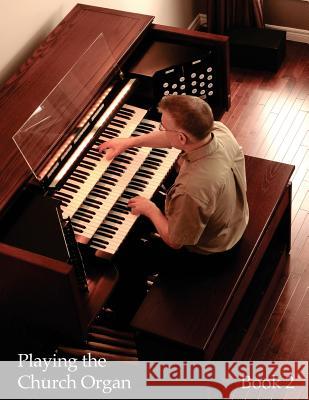Playing the Church Organ - Book 2: For Roland 300, Rodgers 500 and Infinity Series Organs » książka
Playing the Church Organ - Book 2: For Roland 300, Rodgers 500 and Infinity Series Organs
ISBN-13: 9781481268707 / Angielski / Miękka / 2012 / 76 str.
Playing the Church Organ - Book 2: For Roland 300, Rodgers 500 and Infinity Series Organs
ISBN-13: 9781481268707 / Angielski / Miękka / 2012 / 76 str.
(netto: 157,68 VAT: 5%)
Najniższa cena z 30 dni: 154,82 zł
ok. 13-18 dni roboczych
Dostawa przed świętami

Darmowa dostawa!
Book 2 Adding Stops to Presets Using Organ Stops Learning the locations of the stops (the sound controls) in the rows of stop tablets or drawknobs becomes easy here while you will learn what they do and, while using them, quickly learn where they are. It will become second nature and you will find yourself turning them off even without looking at times. Why change stops? Music is written by composers with certains sounds in their ears, sounds that are common to organs that they have grown up with or heard when traveling. Orchestras are more like organs than you'd think. An orchestra manager has to hire players just like you choose stops, to be able to play the music as the composer intended. That's one reason organs with their wide tonal palette of stops were and are used in halls and theaters, to replace the orchestra in an affordable manner - one person playing instead of many. Today with the organ you are playing it is possible to match almost any organ specification using the Voice Palette stops and the USER Library of stops. We can even choose them and hide them in piston settings, ready for you to play on a moment's notice whics is what we have done here in Book 2. In Books 3 and 4 we will show you how to search out and select voices but in this book we've already been done it for you. For those of you who are not quite ready to play pedals, we show you how to let the organ play the pedal stops for you and mark the music for you where this is effective, further satisfying your congregation by letting them hear you play the whole organ with strong, supporting pedals automatically sounding from the organ. The book includes useful drawings to guide you in understanding the operation of its controls. The music, 29 pieces, all for manuals and some with optional pedals, is almost exclusively written for the organ and stops chosen that the composer would find faithful to the music. As you play you will think of music you already know that will work well with the stop settings under your fingers and that's what this book is all about, blending your musicianship with this new organ. This book, just like Book 1, is designed to get the great sounds of the organ under your fingers, encouraging you to go and and learn even more about the organ and its music through the possibilities found in your Roland & Rodgers church organs. Learning how to record and play back your playing lets you go out into the church and hears yourself as others do. Organ stop registrations "shorthand" becomes natural to you, making it easy to write down organ registrations for future use. Antique engravings of organ pipes accompany explanations of how pipes work and sound. Music of great composers Handel, Karg-Elert, Clerambault, Purcell, Brahms. Franck Mendelssohn and more fills out the book."











